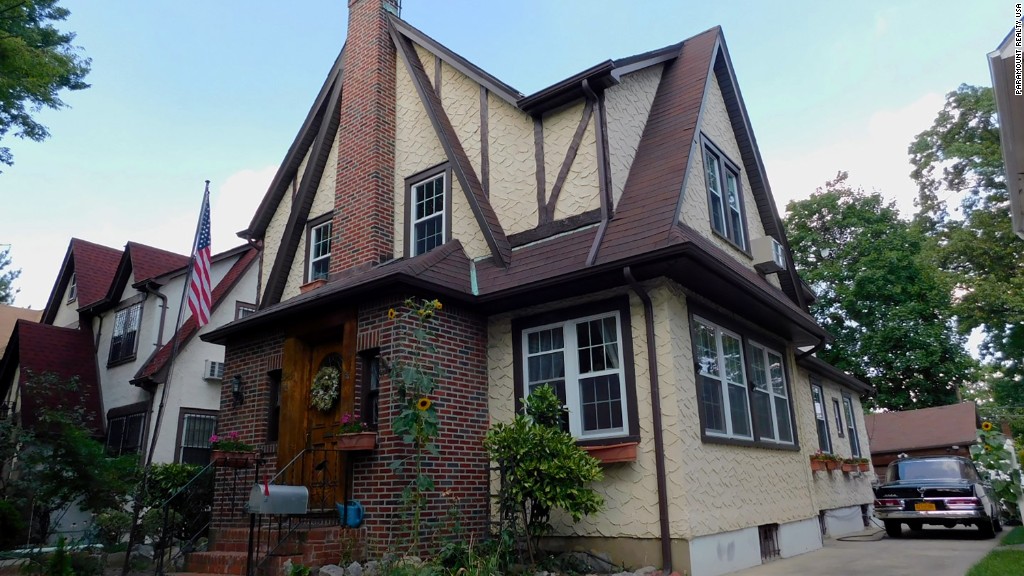
President Donald Trump has vowed to make child care in America cheaper.
But Trump's current proposal, which he touted during his prime-time address to Congress Tuesday evening, will do little to help the working families who need the most relief. That's according to a new analysis from the non-partisan Tax Policy Center.
Making child care more affordable is one of Trump's signature promises to voters. It's listed in his contract with the American voter. His daughter Ivanka Trump played a large role in crafting the plan, which includes three new tax benefits and paid family leave for new parents.
Just about everyone agrees that child care costs in America are astronomical. It now costs more to put a kid in child care than college (if you get in-state tuition).
"My administration wants to work with members in both parties to make child care accessible and affordable," he said Tuesday. He went on to call on Congress "to help ensure new parents have paid family leave."
But an analysis by the Tax Policy Center finds that Trump's proposal is a gift to the rich. The tax experts at TPC say 70% of the benefits will go to families that make $100,000 or more. And 25% will go to people earning $200,000 or more.
"Trump has identified a real challenge affecting working families, but his proposal would do little or nothing to help them," Elaine Maag, an expert at the Tax Policy Center, told CNNMoney. A typical middle class family earns about $56,000.
Related: Even Trump voters want the minimum wage raised
Trump's child care plan (so far)
The heart of Trump's plan is to significantly expand the tax deduction that families can take for child care expenses for kids under 13. Anyone making less than $250,000 ($500,000 if married) could deduct the average cost of child care in their state. (The average would be based on the age of their child, since it usually costs more to care for infants and toddlers).
That sounds great, but families have to pay income taxes to Uncle Sam in order to take advantage of the deduction. Many working class families pay nothing in federal income taxes because they earn too little in income to owe anything.
On top of that, Trump wants to create a "dependent care savings account" (DCSA) to allow families to save up to $2,000 tax-free that could be used to pay for care for kids or elderly parents. Parents could even use the money to pay for summer camp.
Again, it sounds good, but poor families that desperately need a break on child care are unlikely to have extra money to put into the savings account.
"Child care is a major crisis in America, but the Trump plan is badly designed," says Ajay Chaudry, who served in the Obama administration and is the author of "Cradle to Kindergarten: A New Plan to Combat Inequality."
But others, like women's rights champion Anne-Marie Slaughter, say any progress on affordable child care should be applauded.
"If Ivanka Trump could actually get something like this through, it would be real and important progress," Slaughter tweeted.
Related: America's favorite retailer is...
How Trump wants to help the poor
The final part of Trump's plan is aimed at helping poorer families. It's a refundable tax credit so working parents who don't end up owing federal income tax could actually get money back from the government. The maximum amount a low-income family could receive is $1,200 under Trump's tax proposal, but most working class families would get far less than that.
The Tax Policy Center says a couple earning $30,000 a year would get $574 back. It's a modest amount compared to the average child care bill. Stay-at-home moms or dads would not be eligible for the tax credit, but wealthier stay-at-home parents can take advantage of the deduction.
Putting a four-year-old in full-time care ranges from $4,439 a year in Mississippi to a whopping $17,863 a year in Washington D.C., according to Child Care Aware.
Related: Trump gives America's 'poorest white town' hope
Trump introduces paternity leave
On the campaign trail, Trump also floated the idea of providing new moms with up to six weeks of partially paid maternity leave. Now he is taking that a step further by calling for leave for "new parents," which sounds like it would include mothers and fathers.
Trump's original plan called for maternity leave to come from state unemployment insurance programs. But there was a lot of concern about that since not all workers are covered by those programs.
Trump's daughter Ivanka has been working with Congresswoman Marsha Blackburn, a Republican from Tennessee on refining the plan.
"One of the things that is most troubling as a mom in the workforce is finding child care and being certain that your children are safe and well cared for," Rep. Blackburn told CNN in early January.
There are also concerns about how Trump will pay for this child care policy. The Tax Policy Center estimates just the tax deductions and credits will cost $115 billion over the next decade. The Tax Foundation estimates it would cost $500 billion over the next decade.
"This would be a big help financially for families," says Rachel Greszler, a senior policy analyst at the Heritage Foundation, a conservative think tank that hasn't taken a stance on Trump's child care proposal. "But it comes at a big cost."
The price tag may cause Congress to reject the proposal. Congresswoman Blackburn's office and the White House did not respond to CNNMoney's request for comment.


